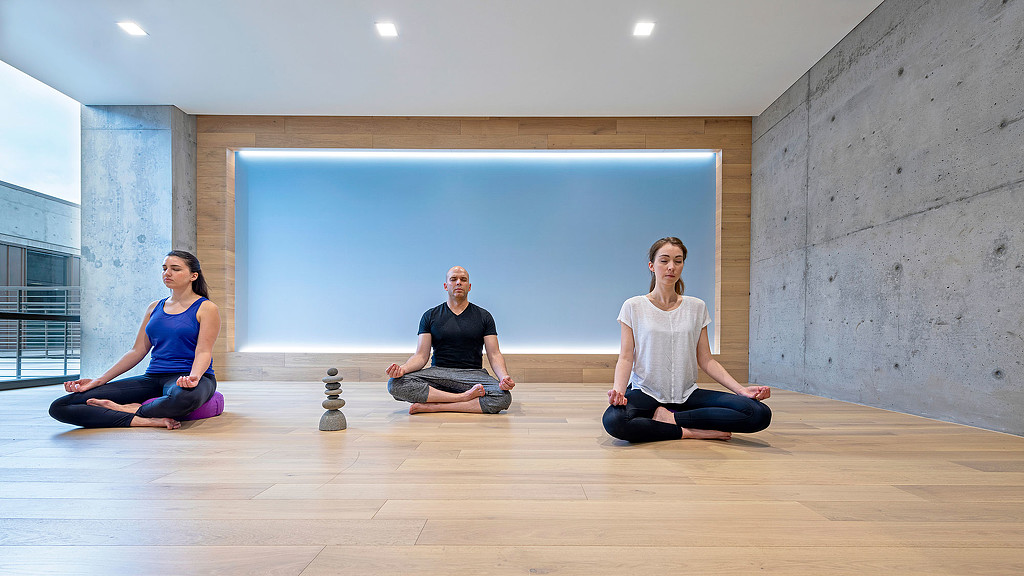Designing Spaces to Help People Feel Emotionally Safe in the Workplace
June 19, 2020 | By Donya Farhangi
Editor’s Note: This post is part of our ongoing exploration of how design is responding to the COVID-19 pandemic.
We are in the midst of an unprecedented social, health, and economic volatility. In the past months, recent events have not only endangered our physical health, but they have also posed a serious threat to our mental health. In these turbulent times, people are experiencing a range of emotions, from feelings of fear and loneliness to anger and helplessness. Concerns about our health and safety, as well as our friends’ and colleagues’ well-being, can be a great mental strain that can have serious implications for our mental health.
How can we help people feel emotionally safe when they venture outside their own homes and interact in public or private spaces with friends, acquaintances, and colleagues?
As designers and strategists, it’s our responsibility to transform existing spaces and experiences to create inclusive, equitable places that instill emotional safety in occupants. By creating environments that deliver a feeling of emotional safety, we can better promote people’s mental health and well-being when they return to the workplace.
Physical vs. emotional safetyPhysical safety is the absence of harm or injury to one’s body and through a physical object or practices that include physical interactions and is one of the most basic human needs. When people are not physically safe, they will seek out ways to be safe in their environment before they can attempt to perform any higher level of survival tasks, like creating meaningful connections or contributing to a shared goal.
Emotions trigger responses in the brain that affect how people feel and behave, and these emotions have a powerful effect on creativity, productivity, and learning. Humans have an imperative for safety wired into our mind and bodies. When people (of any age) realize and trust that their feelings are valid and will be paid attention to with sensitivity, respect, and care, they feel safe. And when we experience safety, our social engagement systems enable us to communicate, collaborate, listen, empathize, and connect, as well as be creative and innovative in our thoughts and actions.
It is generally easier to understand and plan for physical dangers than it is for emotional ones. For example, in response to physical dangers posed by COVID-19, new standards include physical distancing protocols, frequent sanitization of shared surfaces, and a higher level of personal hygiene. However, addressing the emotional well-being implications that COVID-19 poses is just as important.
Although there is no one-size-fits-all approach to creating environments that deliver a feeling of emotional safety, the following considerations can help guide us as we design and reimagine spaces and experiences.
1. Visual cues are a gateway to instill feelings of emotional safety.Visual cues subconsciously instill a feeling of safety in occupants. These cues can be non-verbal, decorative, directional, or informational. This includes thoughtfully designed layouts or any other item purposefully designed to convey a message.
For example, we can find creative solutions to integrate physical distancing measures and safety cues within a space. These measures, designed to improve the physical safety of occupants, can also help make them feel emotionally safe. Solutions that convey a thoughtful approach cause the least disruptions to daily routines, will help put people’s minds at ease.
2. Activations don’t have to be health hazards.Activating a space through activities and physical or digital interaction points can set the tone of a space. Activations are points in space that offer occupants an opportunity to pause and interact with a variety of pre-programmed content, such as small video and art installations, informational digital displays, posters, various branding opportunities, and at a larger scale, programmed events. Activations not only create choice and purpose for occupants, but they can also potentially dictate behavioral cues for others. Activations in a space don’t need to engage a large number of people; creating digital activations and experiences within an existing space can engage individuals while minimizing the number of touchpoints they encounter within a space.
Digital visual displays can be used to share reminders on etiquette, convey messages, and showcase inspiring visual storytelling. Incorporating these moments within a space can convey that a business, employer, or institution has the comfort, health, and safety of its people in mind. This, in turn, enables individuals in a space to feel more emotionally safe.
3. Accommodate people’s emotional needs to create comfort.Now more than ever, it is important to respond to emotional needs of the occupants in any space. Creating opportunities in space for open and honest dialogue, where occupants can feel included, appreciated, listened to, and accommodated, will allow them to have a stronger connection to their environment, feel safer, and perform their tasks optimally within any space.
Emotional Security in the Workplace, a new white paper from the Gensler Research Institute, found that creating an environment where workers feel empowered to take risks, ask questions, pose new ideas, and fail can be more important than the environment itself. When individuals feel emotionally secure at work, they show increased trust in themselves and others.
We can design new spaces, or re-purpose existing ones, to provide new accommodations that help create environments that deliver a feeling of emotional safety. This can include spaces intended to offer a mental break from external stressors, integrated sanitation stations, or central information/resource centers.
Including a communications channel for occupants to voice their opinions about the space, its accommodations, and other features will help people feel included in the decision-making process. This will also help designers and proprietors better understand occupants’ needs and improve the space as their needs evolve.
Ultimately, making emotional safety part of our approach to reimagining spaces and experiences can help us create spaces that can serve as a refuge from the ongoing health, social, and economic crises and contribute to our mental health and well-being.
For media inquiries, email .

